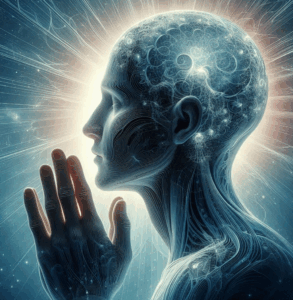Doodle RAMa Meditation Practice is a transformative approach that seamlessly blends creative expression with spiritual devotion. Through abstract drawing, mantra chanting, breath control, and contemplative engagement, practitioners experience a multidimensional meditation that allows them to immerse themselves in a deeply personal and symbolic practice. This integration ensures that meditation is not merely about stillness or silence, but about harnessing the power of visual creativity to enhance spiritual awareness and inner focus.

Abstract Drawing as a Meditative Medium
At the heart of Doodle RAMa Meditation Practice is the use of abstract drawings to guide meditation. Unlike conventional artistic expression, where the goal is to create a recognizable image, the abstract nature of these drawings allows practitioners to engage without the pressure of perfection or aesthetic judgment.
Each meditation page features abstract patterns and designs that serve as both a backdrop and a pathway for the mala bead drawing process. These patterns encourage a sense of spontaneity while offering a structured framework for the practice. As practitioners trace their mala beads along the pre-existing lines, they create a fluid interaction between form and intention. This process fosters a rhythmic engagement with meditation, allowing the practitioner to focus on movement while aligning breath, mantra repetition, and artistic visualization.
The act of drawing mala beads within an abstract space embodies the essence of creative meditation—where form emerges through discipline, yet remains open to interpretation. The abstract designs provide a foundation, but the practitioner’s unique engagement with them transforms each session into a deeply personal experience.
Symbolism in Color Selection and Artistic Expression
One of the distinctive features of Doodle RAMa Meditation Practice is the inclusion of a legend system that guides practitioners in selecting colors for their drawings. This system ensures that color choices are not arbitrary but are imbued with meaning, reinforcing intentionality within the meditation.
The legend designates two primary colors—one for the outer circle and one for the inner circle—each representing different aspects of spiritual engagement. The outer color signifies external expression and devotion, while the inner color symbolizes introspection and inner transformation. By using these colors as a guide, practitioners align their creative process with a structured spiritual intention.
Beyond the guided color selection, practitioners may intuitively choose additional colors that reflect their personal emotions or spiritual journey. The interplay between structured choices and intuitive engagement enhances the connection between artistic expression and meditative awareness. Color becomes more than just an aesthetic component—it transforms into a conduit for energy, emotion, and spiritual resonance.
The drawn mala beads themselves are representations of spiritual engagement, each bead signifying a moment of focus, devotion, and introspection. As practitioners fill their abstract drawings with beads, they physically manifest their meditation, reinforcing their connection to their mantra and breath cycle.
